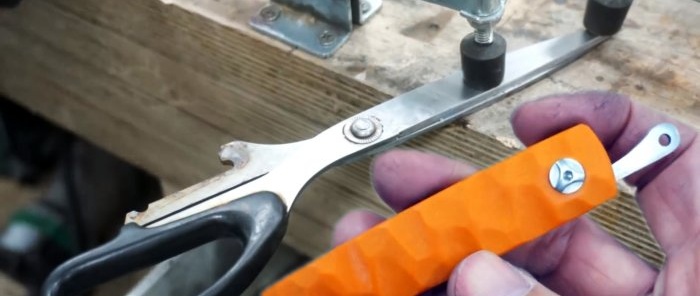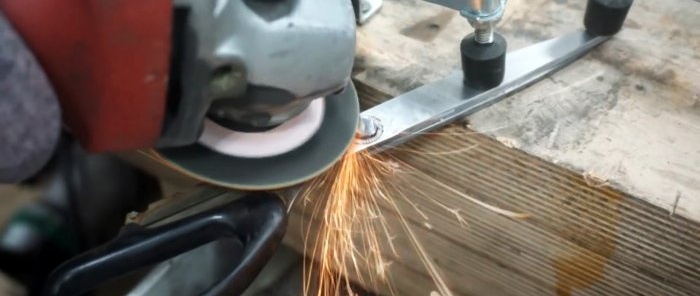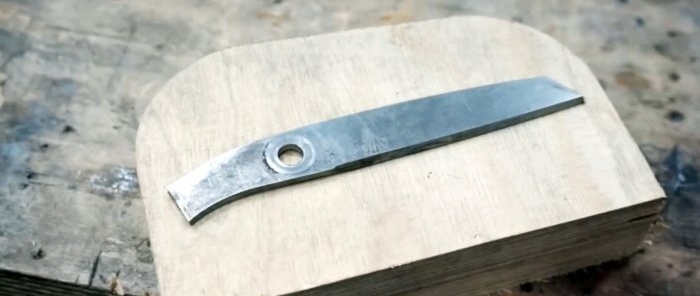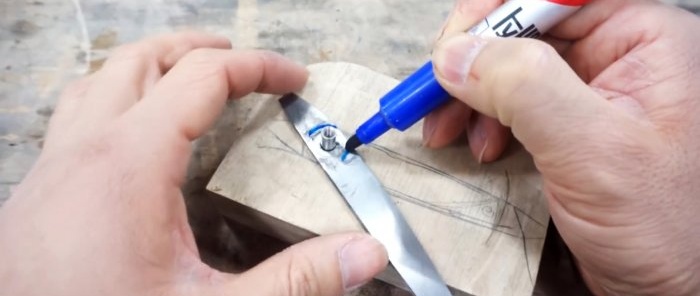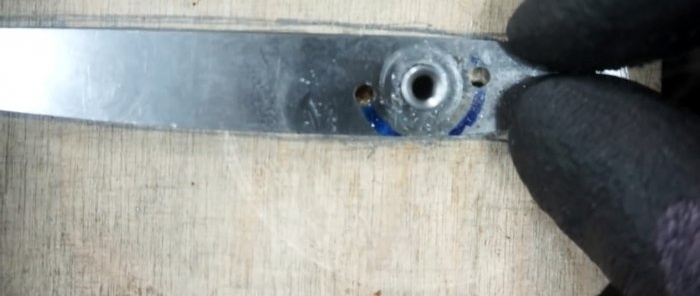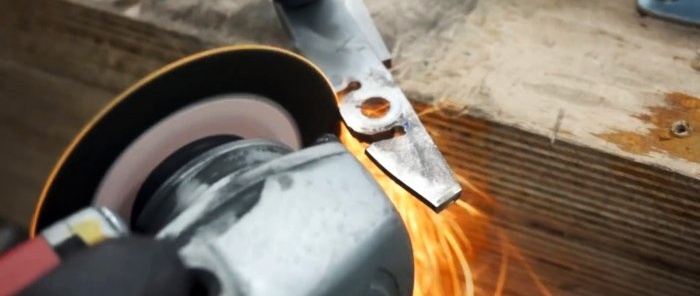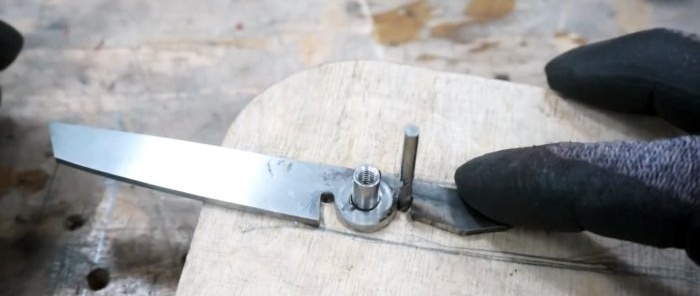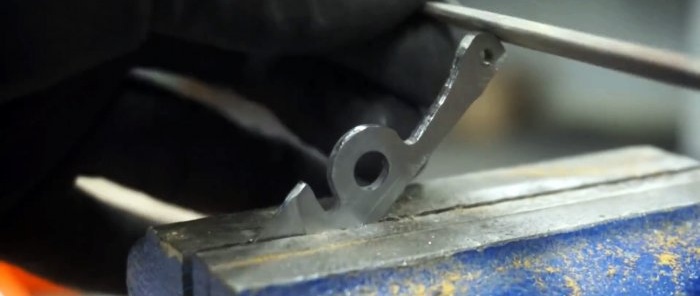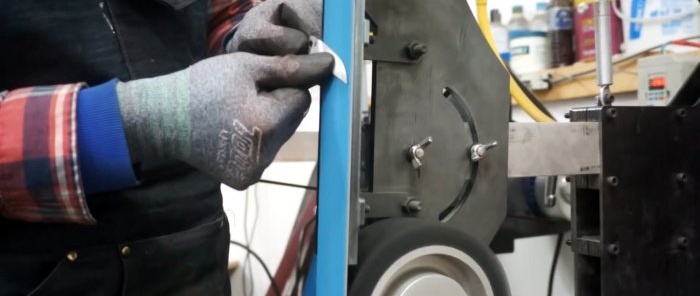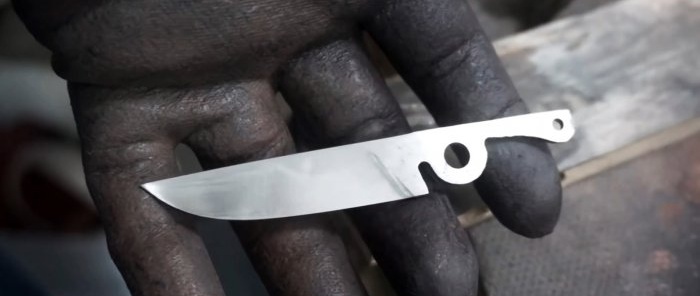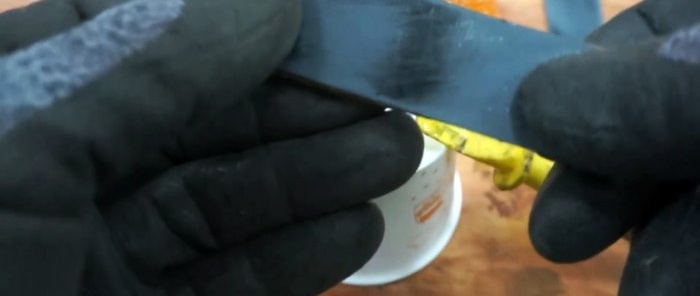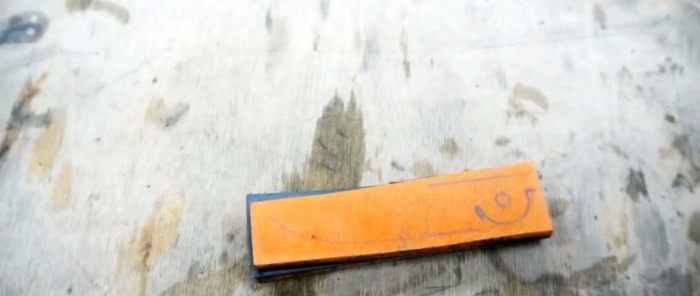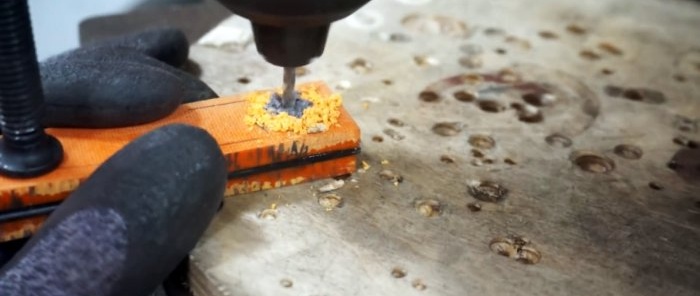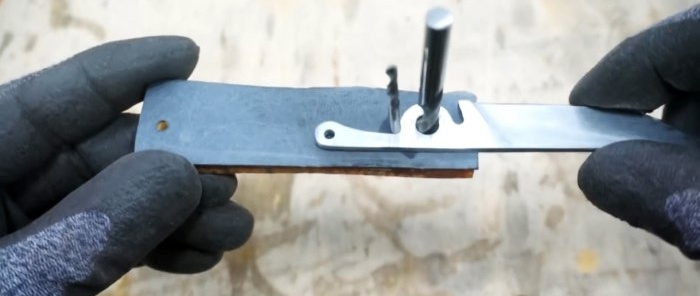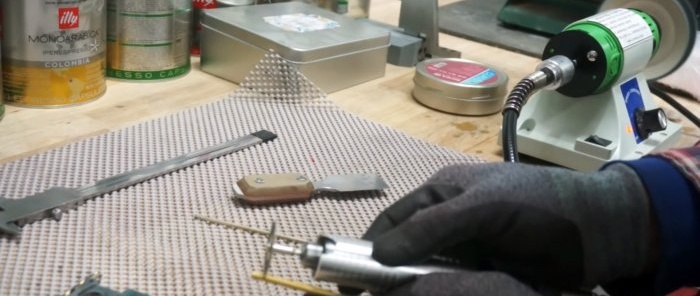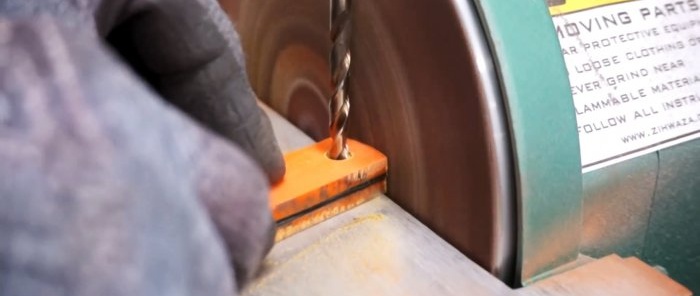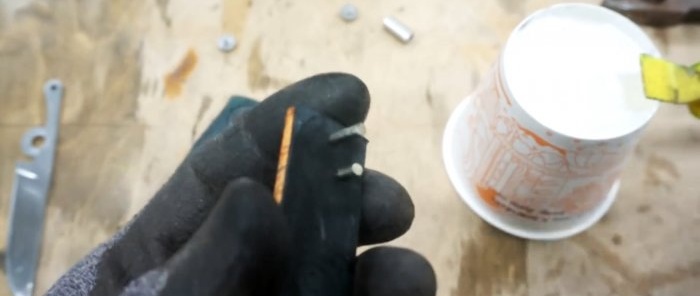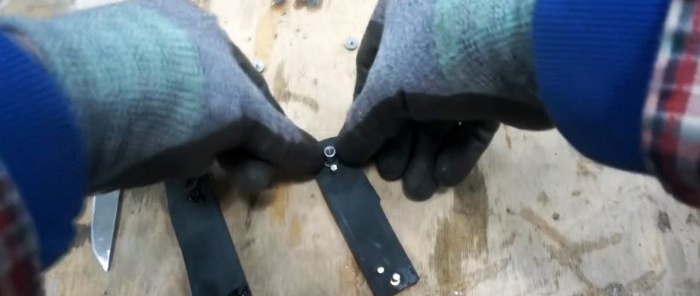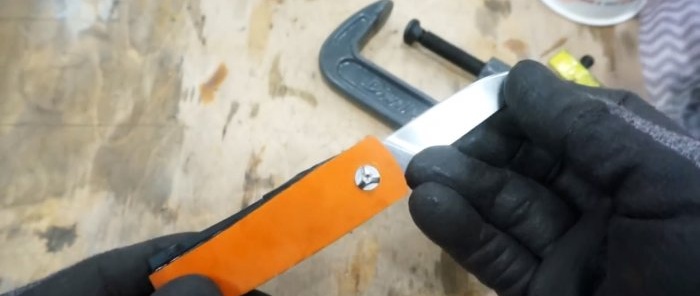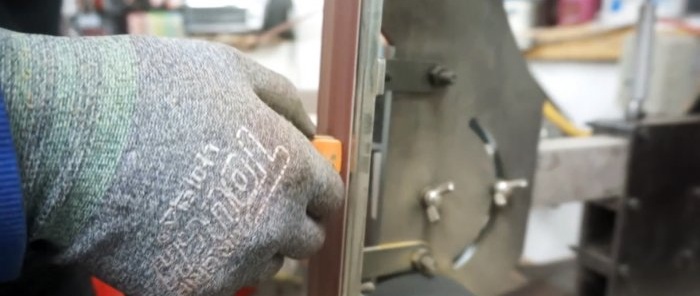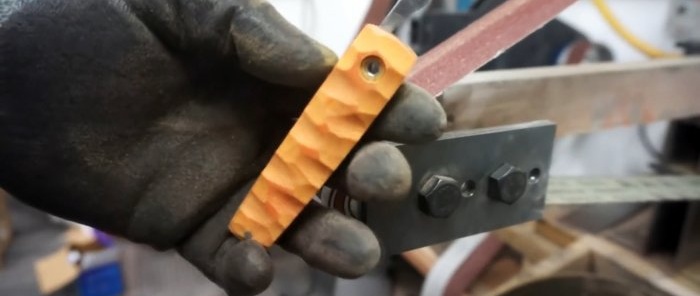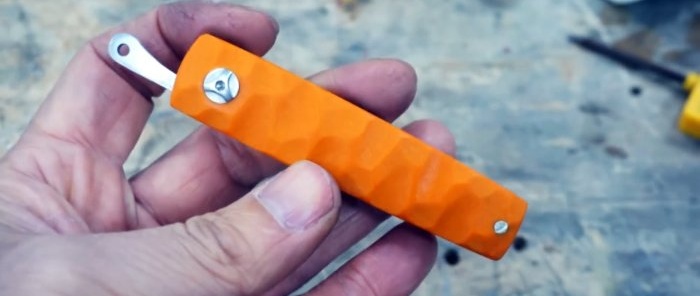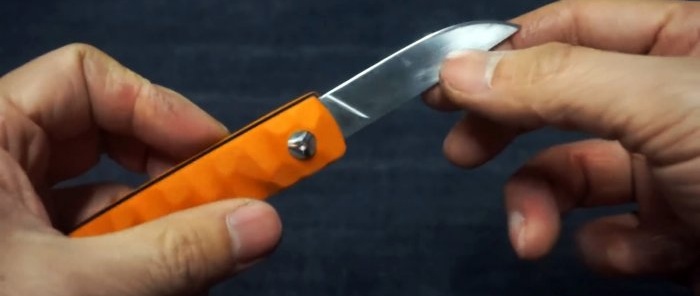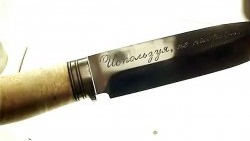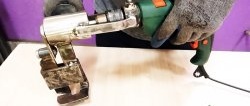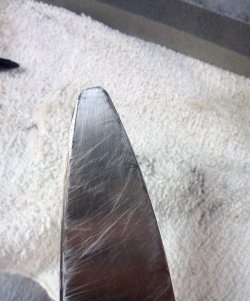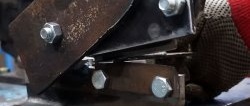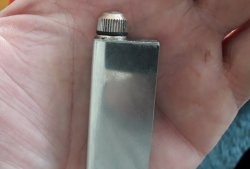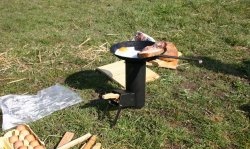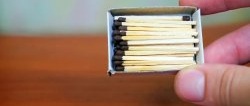How to make a folding pocket knife from broken scissors
Old broken hard stainless steel scissors can be used to make a pocket knife. This is an interesting project, for the implementation of which all you need is a basic tool, maybe even a manual one.
For a knife made from old scissors, you need to cut off the tip and the part with the ring.
In order not to overheat the metal, thereby releasing it, you should add water to the cut site. Trimming is done so that the standard hole for the fastening screw is used on the folding knife.
To make a mechanism for fixing a knife, you need to make a stand. To do this, a hole is drilled in the board or plywood, and a sleeve or screw equal to the diameter of the hole in the blade is pressed into it. A knife is put on it, and its shape is outlined with a pencil 2 times, flipped 180 degrees.
Next, a circle is drawn on the blade near the mounting hole.2 marks are made on it, along which holes are drilled with a thin drill. You can also draw the final shape of the future blade on the surface of the stand for greater clarity.
Next, you need to carve a drawn circle on the blade and trim the shank. Then a pin is installed on the stand near the blade. The result is a clutch like a straight razor. The same pin holds the blade when opening and closing.
Then, when trying on the stand, you need to finally give the blade the desired shape, make a hole on the shank and sharpen it. Since the scissors have a one-sided blade, given the small width of the blade, sharpening to a double-sided one is impossible. You just need to make the descent smoother.
For the manufacture of the handle, it is optimal to use fiberglass. You can take 2 thin sheets of different colors and glue them together with epoxy glue.
Next, the handle blanks are folded together and holes are made in them as on a test bench. A hole is also drilled in the back for the rivet.
Washers are glued to the blanks and pins are pressed in. Then they are assembled with the blade inserted. To secure the blade itself in the handle, you can use a cut intersectional furniture tie.
The handle is shaped using sandpaper.
After sanding, its surface becomes matte; you can restore its shine by wiping it with oil.
The result is a small pocket knife tailored to fit your own hand. Its blade and handle are not afraid of moisture, so with careful handling it is almost eternal.
Materials:
- old scissors;
- fiberglass;
- epoxy resin;
- intersectional furniture screed.
Sharpening the knife, making the clutch and handle
For a knife made from old scissors, you need to cut off the tip and the part with the ring.
In order not to overheat the metal, thereby releasing it, you should add water to the cut site. Trimming is done so that the standard hole for the fastening screw is used on the folding knife.
To make a mechanism for fixing a knife, you need to make a stand. To do this, a hole is drilled in the board or plywood, and a sleeve or screw equal to the diameter of the hole in the blade is pressed into it. A knife is put on it, and its shape is outlined with a pencil 2 times, flipped 180 degrees.
Next, a circle is drawn on the blade near the mounting hole.2 marks are made on it, along which holes are drilled with a thin drill. You can also draw the final shape of the future blade on the surface of the stand for greater clarity.
Next, you need to carve a drawn circle on the blade and trim the shank. Then a pin is installed on the stand near the blade. The result is a clutch like a straight razor. The same pin holds the blade when opening and closing.
Then, when trying on the stand, you need to finally give the blade the desired shape, make a hole on the shank and sharpen it. Since the scissors have a one-sided blade, given the small width of the blade, sharpening to a double-sided one is impossible. You just need to make the descent smoother.
For the manufacture of the handle, it is optimal to use fiberglass. You can take 2 thin sheets of different colors and glue them together with epoxy glue.
Next, the handle blanks are folded together and holes are made in them as on a test bench. A hole is also drilled in the back for the rivet.
Washers are glued to the blanks and pins are pressed in. Then they are assembled with the blade inserted. To secure the blade itself in the handle, you can use a cut intersectional furniture tie.
The handle is shaped using sandpaper.
After sanding, its surface becomes matte; you can restore its shine by wiping it with oil.
The result is a small pocket knife tailored to fit your own hand. Its blade and handle are not afraid of moisture, so with careful handling it is almost eternal.
Watch the video
The material is posted for informational purposes. Making knives in the form of bladed weapons is punishable by law.
Similar master classes
Particularly interesting
Comments (2)

